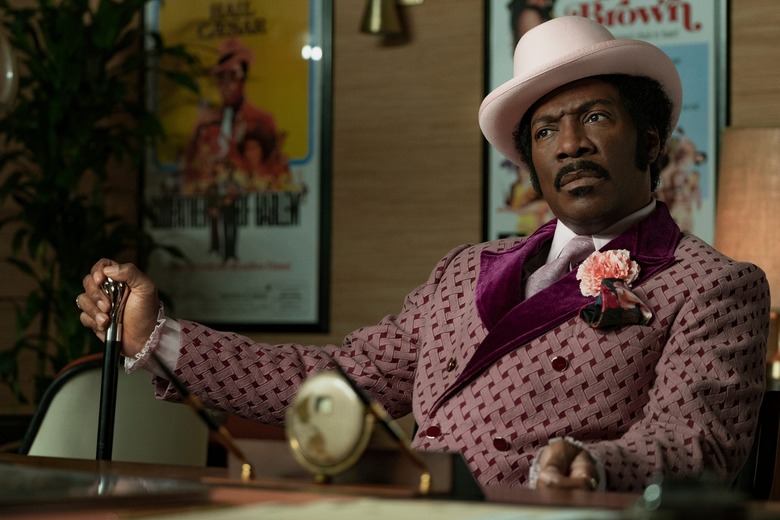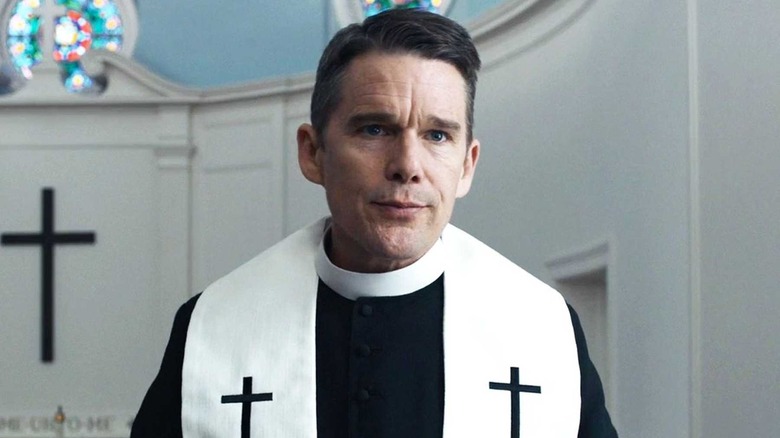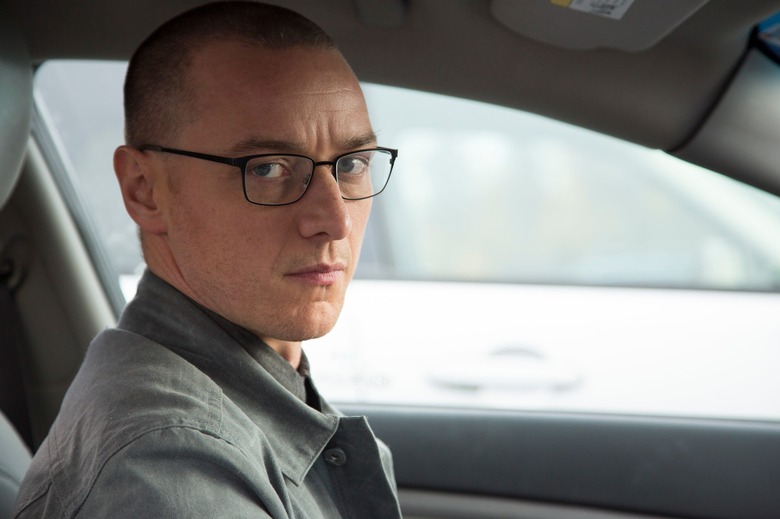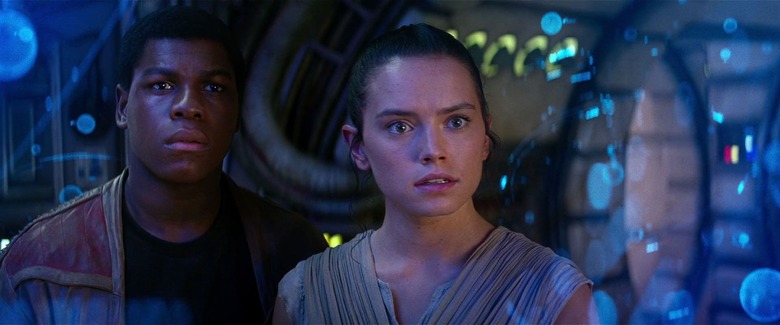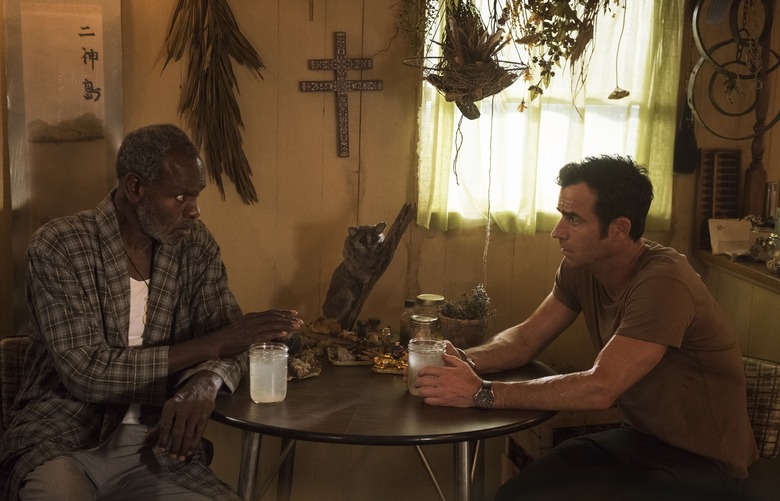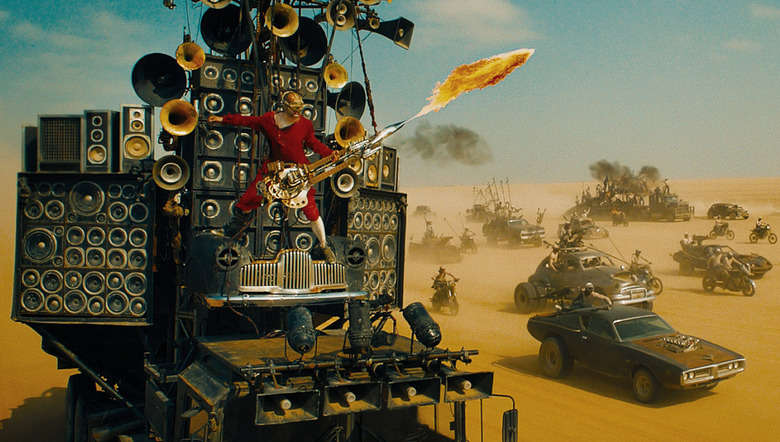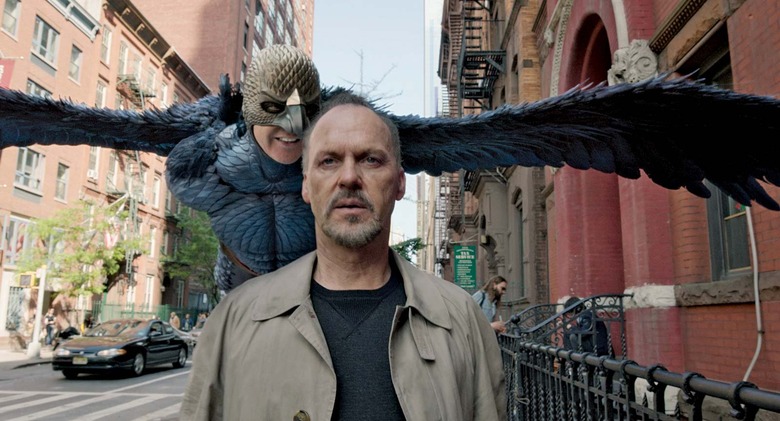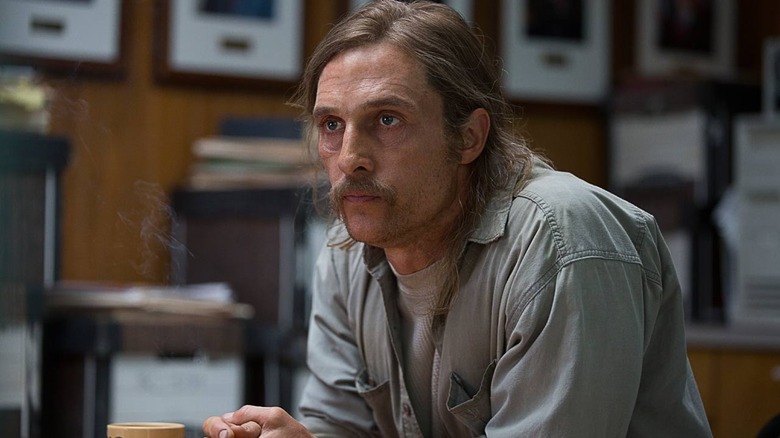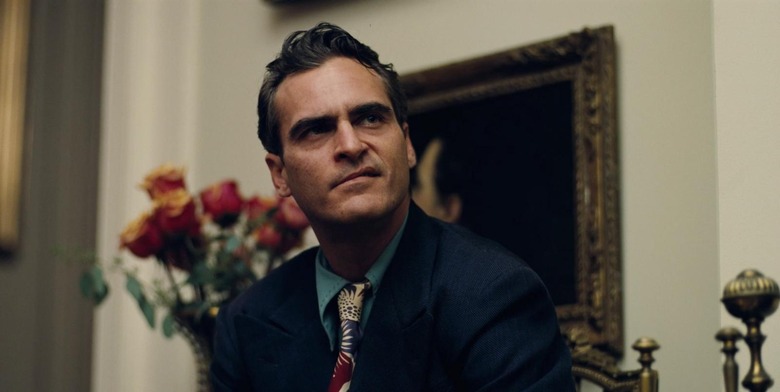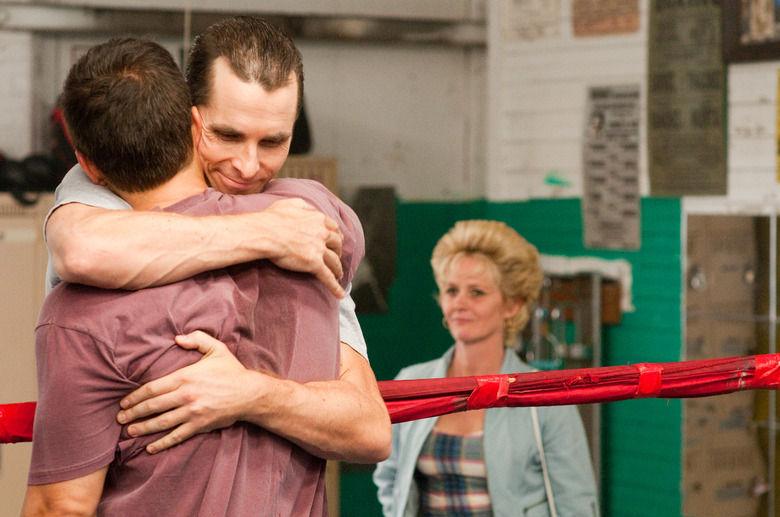The 10 Biggest And Best Comeback Films And TV Shows Of The Decade
(This article is part of our Best of the Decade series.)
As the saying goes, everyone loves a comeback. The 2010s saw a number of creative entities emerge from the wilderness to enjoy renewed artistic credibility onscreen. There were so many comeback stories, actually, that this mere list of ten is guaranteed to smack of exclusions. FX's The People v O.J. Simpson: American Crime Story, for instance, revived interest in the trial of the century while serving as a soft comeback for several actors. Be honest: when's the last time you'd heard David Schwimmer's name around the watercolor? Despite its use of John Travolta, however, there was no one actor on that show who made a resurgence on the level of Travolta's in Pulp Fiction. If anything, the show was more memorable for its Emmy-winning turn by Sarah Paulson and for facilitating the breakout of Sterling K. Brown.
Stranger Things built its brand on '80s nostalgia and thrust faces from that decade, like Winona Ryder and Matthew Modine, back in the spotlight...but there wasn't room for it on this list, either, and that's saying a lot. It should be noted, too, that a return to form, in and of itself, isn't enough to qualify as a comeback. Christopher Nolan was back in top form with Dunkirk, yet while his previous two films may have revealed chinks in his critical armor, they were both still commercial successes. A slightly off-game Nolan is still better than your average blockbuster filmmaker.
Master of the "Nouveau Shamanic" acting style, Nicolas Cage, likewise marches to the beat of a different drum, where the notion of frail mortal comebacks is irrelevant. So alas, you won't see Mandy on this list. But enough with the honorable mentions ... let's look back, in reverse chronological order, at ten of the decade's best film and television comebacks.
Dolemite Is My Name (2019)
Since his '80s heyday as an SNL cast member turned action comedy star, Eddie Murphy has had his ups and downs, career-wise. Movies like The Nutty Professor (1996) and Dreamgirls (2006) could be regarded as comebacks, but outside his voice work in the animated Shrek films, Murphy's 21st-century oeuvre has mostly been made up of Rotten and Razzie-nominated flicks.
Chronicling the rise of Rudy Ray Moore from failed comedian to blaxploitation icon, Netflix's Dolemite Is My Name came along at the tail end of the 2010s to give Murphy the best-reviewed film of his career. It's his first R-rated feature in two decades and marks a return to the kind of foul-mouthed stand-up routines that made him famous. Moore works at a record store with a radio station in it, but he can't get his music on the air, and even when he begins having some success with comedy, he's still having to sell albums out of the back of his trunk.
This is one of those movies where the character's struggles synergize with the real-life narrative of a down-on-his-luck actor. Dolemite Is My Name also marks a comeback of sorts for Wesley Snipes and filmmaker Craig Brewer. Since retiring as Blade, Snipes had been confined to direct-to-video releases and occasional potboilers like Brooklyn's Finest, while Brewer hadn't directed a major motion picture in eight years. The three of them are all re-teaming on Coming 2 America next year, as well.
A former Barnes & Noble manager, Brewer burst onto the scene in 2005 with the Sundance phenom Hustle & Flow, which jumpstarted a pattern in his work of characters being "exalted by creativity," as producer Stephanie Allain once put it. Whether it be Terrence Howard's frustrated pimp recording hip-hop songs in his home studio, or Samuel L. Jackson's embittered farmer playing blues guitar on stage in a sweaty nightclub (see: Black Snake Moan), Brewer excels at depicting people who are able to rise above their circumstances through electrifying moments of artistry. Dolemite Is My Name taps into the old Eddie Murphy for a like-minded ode to collaborative energy and the pursuit of one's dreams.
First Reformed (2017)
Hard as it may be to believe, Paul Schrader only recently earned his first Academy Award nomination with First Reformed. This is the screenwriter of Taxi Driver and Raging Bull we're talking about. Schrader is perhaps best known for his string of collaborations with Martin Scorsese (which also includes The Last Temptation of Christ and Bringing Out the Dead), but it wasn't long before he himself crossed over into directing.
Around the turn of the millennium, he was garnering positive reviews with movies like Affliction and Auto Focus, but things started to go wrong in 2003 when he was fired from the film that would become known as Dominion: Prequel to the Exorcist. Both Schrader's version and the competing Renny Harlin reshoot — released as The Exorcist: The Beginning — were poorly received. Schrader dropped off the radar and made a number of bargain-bin flicks, at least one of which he disowned. The Canyons, for example, piggybacked off Lindsey Lohan's tabloid travails by sticking her in an erotic thriller with porn star James Deen.
Schrader finally recouped some dignity when he made a return to his religious roots and cast Ethan Hawke as the pastor of a small historical church in First Reformed. Possibly his finest directorial effort, the film lives in the stillness of its voiceovers, which reflect the thoughts of a dying man on a dying earth. As a form of prayer, Hawke's character, Pastor Toller, has decided to keep a journal in longhand with the intent of destroying it after one year.
He's the kind of minister who mixes Pepto-Bismol with alcohol while presiding over a sparse congregation in the shadow of a nearby megachurch. Cedric the Entertainer is the pastor there, while Toller's own First Reformed Church survives as more of a museum piece. It's not until a woman, aptly named Mary (Amanda Seyfried), comes to Toller seeking counseling for her husband that his life begins to undergo an eco-terrorist shakeup. There's a streak of masochism to First Reformed, which threatens to undo it at the end, but with its dark ambiguity and willingness to challenge, it's leagues above most religious films and could easily stand toe-to-toe with Scorsese's Silence in a double feature.
Split (2017)
In 2019, I rang in the new year by revisiting the twists, the triumphs, and the turkeys of M. Night Shyamalan's career since 1999. I'm not a Shyamalan groupie or even the world's foremost Shyamalan scholar, but in an article that spanned no less than seven pages here on /Film, I went deeper (or at least longer) with his filmography than I ever have with any other movie director. I had started rewatching his films over winter vacation, and at that point, Glass had not yet hit theaters. As we got closer to its January 18 release, the negative reviews of Glass started pouring in, pegging the film's curiously inert, asylum-lingering plot as a disappointment. It became apparent that Shyamalan's comeback with Split might be a short-lived one.
That in no way alters the inherent, rah-rah comeback nature of the glorious exploitation film that is Split. A brief return to form is still a return to form, and if some regard Shyamalan as a has-been, well, that's still better than being a never-was. Anchored by a virtuoso performance from James McAvoy, Split was Shyamalan's best movie in years, a quantum leap forward, or backward, as the case may be, to the time when he ruled the roost as a director of thrillers with twist endings. Call it a quantum comeback. Call it The Seventh Sense.
I dare say Split might have delivered up his second-best twist ever when it revealed itself as a stealth Unbreakable sequel. That's not a spoiler anymore, thanks to the marketing for Glass. What it is now is a memory of an exhilarating movie moment that Shyamalan achieved long after his critics dismissed him. The triumph of Split, its rich psychological underpinnings, its empathy for those of us who are damaged goods, can be felt most acutely in the climactic scene where McAvoy's character, Kevin Wendell Crumb, shouts, "Rejoice! The broken are the more evolved!"
This year, Shyamalan has already moved on to co-producing and directing episodes of the Apple TV+ series Servant. Split showed that no artist, not even a four-time Razzie-winning writer-director-actor, has ever fallen so far that he or she is beyond creative redemption.
Star Wars: The Force Awakens (2015)
It's only been four years since The Force Awakens, and already it feels like the honeymoon is over with J.J. Abrams' well-manufactured franchise remix—and Star Wars in general. As intent as it is, however, upon "rhyming" with previous saga elements (like planet-destroying star bases and anguished father-and-son catwalk confrontations), there's no denying that The Force Awakens represented a major comeback for Star Wars.
For years, George Lucas was raked over the coals for the wooden, CGI-heavy prequels and his incessant tinkering with the original trilogy. In 2012, he finally divested himself of his production company, Lucasfilm, selling it to Disney, which wasn't afraid to spend four billion dollars, having already scooped up Marvel for the same amount. Abrams promptly jumped starships from the U.S.S. Enterprise to the Millennium Falcon, and the rest is history.
Charismatic young actors like Daisy Ridley, John Boyega, and Adam Driver became the new face of Star Wars. Everyone fell in love with the soccer ball droid, BB-8, who was never more likable than when he was giving a lighter-enabled thumbs-up. Harrison Ford, meanwhile, slid back into the role of Han Solo more naturally than he did the role of Indiana Jones in Kingdom of the Crystal Skull. Together, these actors and their characters, along with Oscar Isaac and a mo-cap alien version of Lupita Nyong'o, outshone the more nonsensical plot elements like Rathtars and thermal oscillators.
It's no coincidence that the first line of dialogue was, "This will begin to make things right." Built on practical effects and laced with moments of sheer grandeur, like the sight of a crashed Star Destroyer in the sand, or the fearsome spectacle of a Nuremberg-esque Stormtrooper rally, The Force Awakens sought to restore the tactile, heartfelt nature of Star Wars. For its efforts, it became the franchise's highest-grossing film. The prequels may hold a certain niche appeal for hardcore fans, but this is the movie that made the world at large care about Star Wars again.
The Leftovers, Season 2 (2015)
It's almost funny to hear Watchmen fans extolling the genius of Damon Lindelof now, given the level of blowback he received in the years following the divisive Lost series finale. ABC's island-set show addicted viewers but not everyone realized they had signed up to watch a character drama where the mystery was only a MacGuffin. In 2012, a month after Prometheus hit theaters, Lindelof appeared in a Nerd HQ panel entitled, "The Art of Being Despised." He had co-written the film's similarly divisive screenplay and would follow the same pattern in 2013 with Star Trek Into the Darkness. Following that subpar sequel's summer release, he quit Twitter, citing hurt feelings.
The date of his departure was October 14. That was the same date that two percent of the world's population disappeared on The Leftovers. The first season of Lindelof's new HBO show was heavy with grief in a way that turned some viewers off, judging by the season-to-season dip in ratings. They should have stuck around, because The Leftovers really started to soar once it finished adapting Tom Perrota's novel and ventured into uncharted plot territory.
With a new opening theme ("Let the Mystery Be," dissatisfied Lost fans), Season 2 moved the show from Mapleton, New York, to the miracle town of Jarden, Texas, a place left untouched by the Departure. Kevin Garvey and Nora Durst (Justin Theroux and Carrie Coons) and their daughters took up residence next to the Murphy family, which included two future Watchmen players, Regina King and Jovan Adepo. The disappearance of the Murphys' own daughter, Evie (Jasmin Savoy Brown), and Kevin's fractured state of mind would put him on a collision course with the hot-tempered John Murphy (Kevin Carroll).
It would also lay the pipeline for some brain-melting twists in the back half of the season. Two of them take place in trailers, and that's all I'll say, in case anyone out there missed this gem of a season. You'll never look at a karaoke rendition of "Homeward Bound" the same way again ...
Mad Max: Fury Road (2015)
Fury Road revived a franchise that hadn't been relevant for thirty years, giving us its best entry yet and one of the decade's best films. Has there ever been another movie series that went back to the well after so long and produced such stellar results? Director George Miller has seen more than one project go unrealized in his career; we can only wonder what his Justice League might have looked like. In the case of Mad Max, it didn't help that the franchise's original star, Mel Gibson, had become persona non-grata in Hollywood. Gibson would make his own directorial comeback in 2016 with Hacksaw Ridge, but rather than wait around for him to enter the good graces of Oscar voters again, Miller elected to recast the role of Max Rockatansky.
Tom Hardy was no stranger to metal muzzles (Bane, is that you?), but this was the first time we'd see him strapped to a car as a "blood bag," or fighting a one-armed woman while chained to a skeleton-white War Boy. Taking viewers on a relentless, high-octane thrill ride through the desert, Fury Road emerged from development hell to become the surprise blockbuster hit of 2015. With its quasi-religious steering wheels, flame-throwing guitars, and daredevil "pole cats," the film's post-apocalyptic wasteland arrives fully formed. It doesn't need explaining. It just is.
Hollywood loves a good chase scene, and while the notion of a whole chase movie is nothing new (Apocalypto was one of those, too), it had never been done with such quirky panache. Miller made the concept "shiny and chrome" again, all while showing a band of women prevail against a patriarchal system that just wants to use them as livestock for breeding. It's fitting to see Max fade into the crowd while the real star of the movie — Charlize Theron's Furiosa — gets lifted up to a new green utopia.
Birdman (2014)
You might not necessarily agree that Michael Keaton is the best Batman, but I think we can all agree that Keaton had fallen on hard times as an actor prior to his appearance in Birdman. He kept working after he hung up his Batman suit, but his last real '90s hurrah came when he reprised his role as ATF agent Ray Nicolette in twin Elmore Leonard adaptations, Jackie Brown and Out of Sight. Even then, he was ahead of the superhero film curve, movie-hopping around in character and showing us how a shared universe could exist cinematically.
Aside from his voice work as the Ken doll in Toy Story 3, my only real memory of 21st-century, pre-Birdman Keaton comes with White Noise. That 2005 horror flick squandered a neat premise involving electronic-voice phenomenon (ghosts on tape) while also finking out on the seeming promise of a Keaton comeback. As it turned out, the comeback was still on its way; it had just been prematurely teased.
Alejandro G. Inarritu's Birdman plays on our association with both Keaton and Edward Norton as former comic book movie stars. Together with Batman, Batman Returns, and Spider-Man: Homecoming, it forms an unofficial quadrilogy whereby Keaton helps pioneer the superhero film genre and then critique it before returning to it as a villain. As Batman, Birdman, and Vulture, he always sports wings on his costume, but in Inarritu's film, he also parades through Time Square in tighty-whities, showing us his vulnerable side as a balding has-been actor.
Edited to look like a one-take marvel by a director who considers Marvel movies cultural genocide, Birdman takes us backstage on Broadway, out into Manhattan, then back through the audience as Keaton's character, Riggan, seeks to reclaim some of his former glory. He's still capable of levitating and telekinetically throwing objects in his dressing room, so we know the magic hasn't left him completely. Snubbed by the Oscars for Best Actor here, Keaton nonetheless followed up Birdman with an appearance in another Best Picture winner, 2015's Spotlight.
True Detective, Season 1 (2014)
Matthew McConaughey's comeback was so epoch-making that it gave rise to a new portmanteau: the McConaissance. This term originated in a New Yorker article dated January 16, 2014. That was the day McConaughey received his first Oscar nomination. In the early 2010s, he had already begun reinventing himself as a serious dramatic actor, moving away from his vacuous image as a leaning rom-com poster boy. The McConaissance was already somewhat underway, but the airing of True Detective in the weeks leading up to the 86th Academy Awards (where he won Best Actor) is what really cemented it.
The show had just premiered a few days before the Oscar nominations were announced, and it wasn't until the following weekend that Dallas Buyer's Club began greatly expanding its theater rollout. Simply put, most people hadn't seen the movie yet. They were busy at home, watching HBO, in the grips of our new national obsession: this literate show with epic tracking shots called True Detective.
Like his quotable cop character, Rust Cohle, we thought we were "mainlining the secret truth of the universe." Over the course of its eight-episode run, the first season of True Detective hinted at conspiracies (against children and against the human race in general). It alluded to weird fiction. Who was the Yellow King? The show's central murder mystery proved to be a springboard for a great many fan theories.
Some viewers might have been disappointed when the show revealed the true mundane face of its killer, as if to highlight the banality of evil as it exists in this world (as opposed to the darkest corners of our imagination). Personally — spoiler alert — I thought it was profoundly moving to see a resurrected Rust, the quintessential pessimist, casting a Christlike reflection in his hospital bed, where he would awake to the possibility of warmth and peace and love beyond darkness. Rust and his partner, Marty, played by Woody Harrelson, didn't get all the bad guys ... but McConaughey did gain a newfound respect in Hollywood. In the summer of 2014, he did a victory lap by starring in Interstellar opposite Matt Damon, a peer who had once mocked his predilection for shirtlessness. The McConnaissance was real.
The Master (2012)
Joaquin Phoenix drew early accolades for his performances in Gladiator and Walk the Line, but by the end of the 2000s, he was ready to tear down his own legacy before building it back up in the 2010s. In a spoiler review of Joker this October, I wrote the following:
Ironically, the latest awards-friendly actor to inherit the Joker mantle was once in a place where his career itself had become something of a joke. After his seeming implosion on Late Night with David Letterman in February 2009, Phoenix became the punchline of a Ben Stiller gag at the 81st Academy Awards. On Letterman, he had announced that he was retiring from acting, crossing over, as actors sometimes do, into bearded hip-hop. If you tuned in on Oscar night, as people often don't, you would have seen him laughed at by an audience of his peers.
Fast forward to 2019 and Phoenix is once again a highly respected actor whose ignominious flameout for the mockumentary I'm Still Here is but a fading memory. Yet the rise of the Phoenix this decade might not have been possible without The Master. Paul Thomas Anderson's 2012 film features career-best work from both Phoenix and the late great Philip Seymour Hoffman. It showed us a new Phoenix with a more ragged, dissolute quality to him. His character, Freddie Quell, is a donkey of a man whose "aberrated" self renders him an outcast, unable to harmonize with the world around him.
If that sounds like a description of Arthur Fleck, it just goes to show that Joker was built on the back of Freddie's dry-humping (and Joe's hammer-wielding vigilante exploits in You Were Never Really Here, which forms its own existential retort to the title I'm Still Here). Freddie may be repulsive at times, but anyone with a raging dysfunctional side should be able to relate to his constant self-sabotage.
The Fighter (2010)
With his Amazon TV series cancelled and no new feature films under his belt since 2015, David O. Russell may well have landed himself in director's jail again. Given his history of bad behavior, some might say he never should have escaped jail in the first place. Russell is one of the many men who got caught up in the Weinstein effect in 2017, yet his early 2010s resurgence, beginning with The Fighter, is worth remembering for the simple reason that he was allowed to make a comeback, while others weren't. For every David O. Russell out there, there are probably another ten or twenty filmmakers who weren't given another at bat.
In The Fighter, Christian Bale's character, Dicky Eklund, thinks he's making a comeback, but in reality, the gaunt, crack-addicted boxing trainer is letting a film crew follow him around so they can make him the subject of an unflattering documentary. Melissa Leo plays his mother, the matriarch of a combustible Boston-area family, which also includes the titular fighter, played by Mark Wahlberg.
The Fighter pulled off the rare Oscar feat of a dual win for Best Supporting Actor (Bale) and Best Supporting Actress (Leo). Bale's weight loss was par for the Machinist course with him, but the movie put Leo on the map and it put Russell back on the map after his 1999 breakthrough hit, Three Kings, gave way to a fallow decade, punctuated only by the bizarre male breastfeeding of I Heart Huckabees. The Fighter was also instrumental in showing off the dramatic range of Amy Adams, who had been typecast in ingenue roles up to that point.
In 2012 and 2013, Silver Linings Playbook and American Hustle proved that The Fighter was no fluke and Russell had talent to spare. However, as the culture at large taught us with the spate of disgraced public figures post-Weinstein, having talent doesn't always translate to being the best human being. As Hollywood looks to the 2020s, we can only hope that it might make its own comeback by putting dramas like this in the hands of other filmmakers who are perhaps humble instead of hubristic and more deserving of a chance to redeem themselves. As the titles on this list have shown, one shot at redemption is all it takes sometimes to restore the audience's faith and restore an artist's integrity.

